Local and regional healthcare spending
Note on methodology: we considered the infra-national governments as a whole: local and regional (and intermediate) tiers together
General comparative trends
In addition to comparing the involvement of subnational governments in public health management, it was also decided to explore LRG expenditure in this domain. The aim was to seek further confirmation validating the nature of LRGs’ responsibilities in the field of health. This was done by first establishing a baseline in terms of subnational governments’ general expenditure and then determining the amount of LRG expenditure that is allocated to public health.
Firstly, we ranked the respondent countries based on the share of the nationalGDPattributable to LRG expenditure. This data was also intended to provide an indication of the degree ofLRGs“financial autonomy” , i.e. the ability ofLRGsto adjust subnational funding to meet local needs.[1] The survey found thatLRGsin Denmark spend the equivalent of 34.4% of the national GDP, representing the highest value, while 0.1% represented the lowest (in Malta). The average is 11.1%.
Secondly, using the same countries, we examined LRG expenditure allocated to healthcare as a percentage of total LRG expenditure. Italian regions spend 47.7% of their total expenditure on health, the highest value; the lowest value corresponds to no spending at all on health (the case in Cyprus, Greece and Malta). The average is 11.3%.
Figure 6 shows that in the countries where LRG expenditure only amounts to a small percentage of the national GDP, the percentage of LRG expenditure on health is also correspondingly low. Nevertheless, the following exceptions should be noted: Belgium and Germany are federal States whereLRGs(Régions and Länder) have among the highest expenditure rates in Europe. However, health is not an area that is covered by these LRGs’ main expenditures. The reason for this is that these health systems are centralised and therefore financed at the federal tier in the countries concerned.
Figure 6– Local and regional government spending on healthcare
Source: OECD-UCLG World Observatory on Subnational Government Finance and Investment | [2]
Italy presents another unique case. Although LRG general expenditure is in line with the European average, local health expenditure is by far the highest in Europe. Another particularity is that the Italian health system is entirely managed by regions. This decentralisation of the health system almost makes Italy a “federal country” from the health management point of view.
Box 4: Healthcare in Italy: a regionalised systemThe Italian health management system has been decentralised to the regional authorities; in fact, the regions enjoy unparalleled autonomy with mandates for legislative, administrative, planning, financing, delivering and monitoring functions in the health domain. Because of this high level of independence, health management and organisation can vary across the 20 regions. The central government still retains power however over certain legislative and other important functions to guarantee the equity, equality and quality of the whole system. During the COVID-19 pandemic, the central government took the lead as it became evident that regions alone could not properly respond to the pandemic crisis. In addition, the crisis required the mobilisation of the national civil protection system which, in Italy, falls directly under the authority of the Presidency of the national Council of Ministers.
Funding for health is primarily tax-based (direct and indirect taxes). Part of the funding is collected nationally and then redistributed by the central level to regions. Financial revenues for the regional systems also come from the sale and/or co-payments by patients of certain services (diagnostic and specialist) and over-the-counter drugs. At the regional tier, the health system is organised into a network of Local Health Authorities (ASL – Aziende Sanitarie Locali) and of public and private hospitals. ASLs are public entities and are organised at the territorial level into ‘districts’ according to population.
Source: Italy’s profile in Soldi and Odone (2017)[3] |
Figure 7 presents a comparison of the survey countries according to their GDP, LRG expenditure as a percentage of GDP, and LRGs’ health expenditure.[4] The results show that theLRGswith the highest expenditure in terms of share of nationalGDPare from the higher and very high-income countries; yet, being from a high and very high-income country is not enough to guarantee that theirLRGswill show a correspondingly high level of health expenditure (e.g. Luxembourg, the Netherlands, and Iceland).
Also, it would appear that no simple correlation can be drawn between the level of expenditure byLRGson public health and the size of the national GDP. Both low-income and high-income countries can haveLRGsthat spend sizeable amounts on their health provision.
Figure 7 – Comparison of nationalGDPper capita, LRG general expenditure and LRG health expenditure
Source: TERRI clusters 2021 | OECD-UCLGCEMRWorld Observatory on Subnational Government Finance and Investment (SNGWOFI)
[1] Allain-Dupré, D. “Assigning responsibilities across tiers of government: Trends, challenges and guidelines for policy-makers”, OECD Working papers on Fiscal federalism, No. 24 OECD Publishing Paris, https://doi.org/10.1787/f0944eae-en
[4] For more information, see the Methodology and Annex 1
